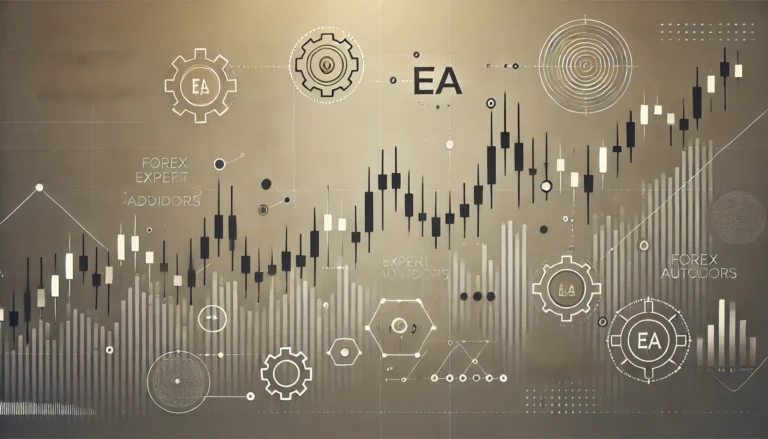Expert Advisors, commonly known as EAs, play a crucial role in the world of modern trading. For those who are new to platforms like Metatrader or other automated trading systems, understanding what they are and how they work can be challenging. So let’s dive into the world of Expert Advisors to demystify their functionality.
Definition and purpose of an Expert Advisor
An Expert Advisor is essentially an automated software used in trading. Designed to work with trading platforms like Metatrader, an EA allows the automation of decision-making processes in trading. Simply put, these programs can analyze market trends, generate trading signals, and execute trades without human intervention. This might seem incredible, but it helps traders save time and maximize their potential profits.
The primary goal of these tools is to help traders make informed decisions based on extensive market data analysis. For example, an EA can monitor the forex market 24/7, ensuring that valuable opportunities are never missed, even when the trader is asleep.
How does an Expert Advisor work?
At its core, an Expert Advisor uses algorithms defined by predetermined criteria. These algorithms are designed to analyze market movements, identify trading opportunities, and execute trades accordingly. This includes following specific conditions such as support and resistance levels, trend lines, and technical indicators like moving averages.
Imagine this: Once configured, the EA constantly scans the market. When it detects a setup matching the predefined criteria, it generates a trading signal and then executes the trade. This speed is essential in the fast-paced world of algorithmic trading, where even a few seconds can mean the difference between a gain and a loss.
Why use an Expert Advisor?
One of the main reasons traders opt for Expert Advisors is the ability to eliminate emotions from the trading process. Human emotions, like fear and greed, can often lead to irrational errors. With an EA, every trade decision is based solely on preprogrammed logic. It’s much more reliable!
Additionally, an EA proves particularly useful for those who don’t have the time to continuously monitor financial markets. Through automation, traders can diversify their trading strategies without dedicating too much time to analyzing every price movement. It also opens the door to new methods of trading like day trading and scalping—both strategies require constant attention and quick reactions.
Other advantages of Expert Advisors
- Efficiency: A significant advantage of EAs is their ability to process massive amounts of data in a short time. They can manage multiple currencies and assets simultaneously, offering a comprehensive market view at any time.
- Precision: EAs eliminate human errors related to distraction or fatigue, ensuring accurate and timely transactions.
- Diversification: Thanks to their efficiency, traders can broaden their portfolios by investing in various currency pairs or other financial instruments without overload.
Designing and programming an Expert Advisor
Creating your own Expert Advisor may seem intimidating initially, but it’s entirely doable with the right resources. Several platforms like Metatrader provide user-friendly tools to design and program your own EAs. The key here is to have a clear understanding of your trading strategy and how to translate it into algorithmic rules.
The role of programming languages
Most Expert Advisors are programmed in languages such as MQL4 or MQL5, specific to platforms like Metatrader. These languages allow developers to create efficient scripts that connect directly to brokers via the trading platform. They offer varying levels of complexity, from simple actions like opening and closing positions to sophisticated market analyses using advanced mathematical models.
To illustrate simply, imagine you want your EA to buy a currency pair as soon as its price hits a certain support level, and sell when the price approaches a resistance line. You’d code these specific rules in MQL, test the script through various historical market scenarios, and finally implement your EA in a live trading environment.
Testing and optimizing your Expert Advisor
Even after programming an Expert Advisor, the work isn’t over! It’s crucial to test and optimize this tool before using it in real market conditions. Backtesting is a common method used to assess an EA’s performance by simulating its responses to historical data. This test allows you to analyze how well or poorly your EA would have performed if deployed during specific past periods.
Forward testing is another critical step. Unlike backtesting, it involves running the Expert Advisor in demo mode on real-time market data. This helps verify if the optimizations made in the previous step still hold up under current conditions.
| Steps | Descriptions |
|---|---|
| Backtesting Phase | Analyzing the past performance of the EA using historical data. |
| Optimization Phase | Adjusting the EA’s parameters to improve its future performance. |
| Forward Testing Phase | Testing the EA on live markets to validate its functionalities under real conditions. |
Different types of trading strategies with an Expert Advisor
Several approaches exist when it comes to developing trading strategies for an Expert Advisor. Each trader has different preferences based on financial objectives, risk tolerance, and trading style. Here’s an overview of some of the most popular strategies used in EAs:
Scalping
Scalping is a short-term trading strategy that aims to profit from small price changes. Scalpers enter and exit trades very quickly, seeking to accumulate numerous small gains rather than rare large profits. An EA can execute this strategy effectively by handling multiple transactions within a short timeframe, thus increasing the chances of making a profit every day.
Swing trading
Unlike scalping, swing trading is based on longer fluctuation cycles. Swing traders typically hold their positions for several days or weeks, targeting more substantial price movements. A swing trading EA will analyze long-term charts, identifying potential trend reversals and executing trades accordingly.
Directional trading
Another popular category focuses on directional trading, where the goal is to capitalize on clearly-defined market trends. If the market shows a strong upward or downward trend, an EA designed for this strategy will seek to enter in the direction of this dominant trend. This type of software can include additional mechanisms, such as automatically adjusting stop-loss levels to secure profits as the trend progresses.
Challenges and limitations of Expert Advisors
While EAs offer many advantages, they’re not without challenges or limitations. First, the quality of the strategy integrated into an EA is paramount. If the predefined rules aren’t based on solid foundations of financial theory or market behavior, the results can be disastrous. A poor EA could execute inefficient trades, leading to considerable financial losses.
Furthermore, volatile market conditions can also pose a problem. Financial markets are constantly evolving, and a strategy effective today can become obsolete tomorrow. Therefore, continuous monitoring and necessary adjustments to the EA’s code must be made to keep it relevant to current market trends.
Maintenance and updates
Finally, it’s crucial to note that regular maintenance and updates of EAs are mandatory to ensure optimal performance. This includes not only taking into account new developments in market analysis but also resolving any potential bugs that may arise over time.
Automated Forex & Index Trading Bot
Trirex Bot offers fully automated trading for Forex and indices. Join 250+ users with no need to manage trades. Includes guides and 1:1 support.Access to Trirex v2.1, the fully automated Forex Robot Comprehensive beginner-friendly guides and 1:1 support Multiple risk setups for easy copying Free updates ensuring the latest trading strategies Discord user server included for community support







